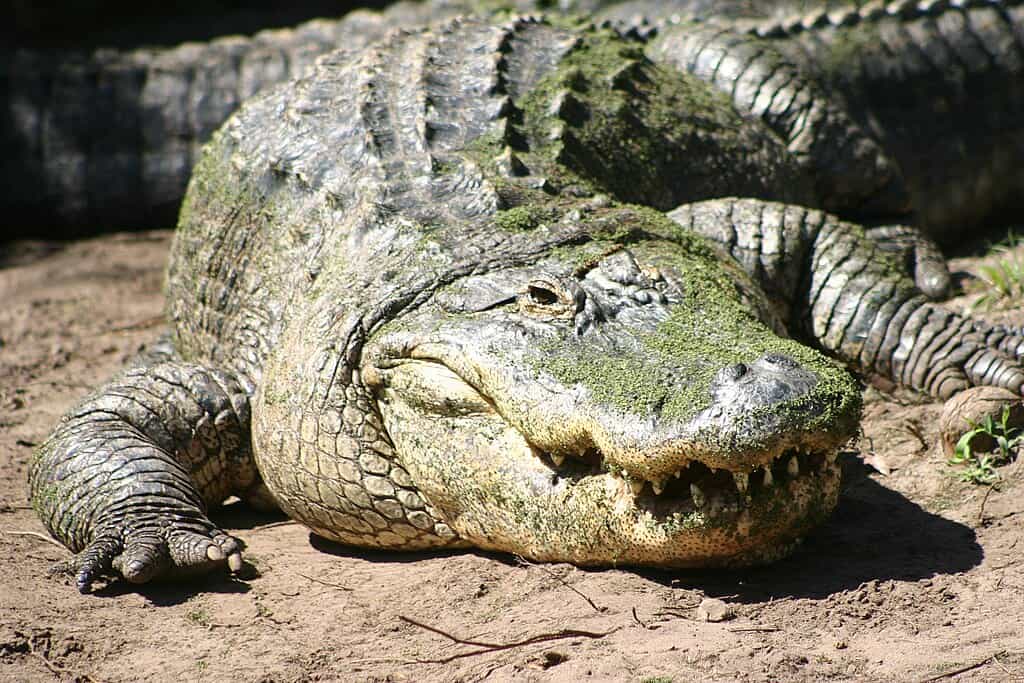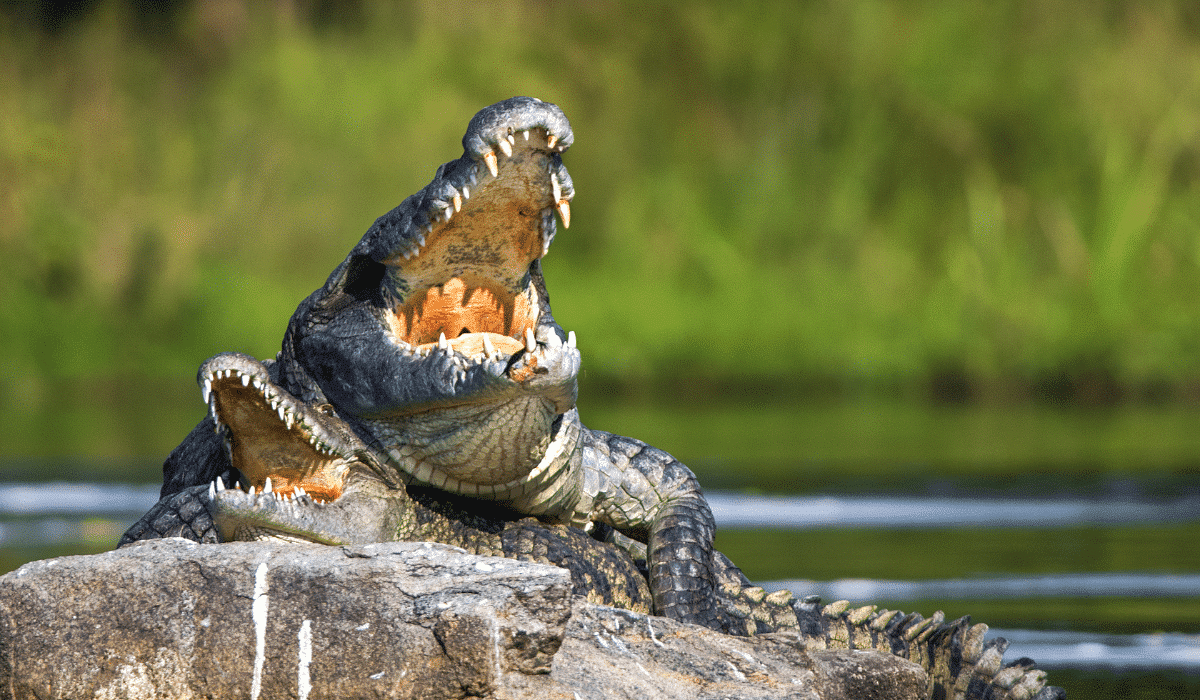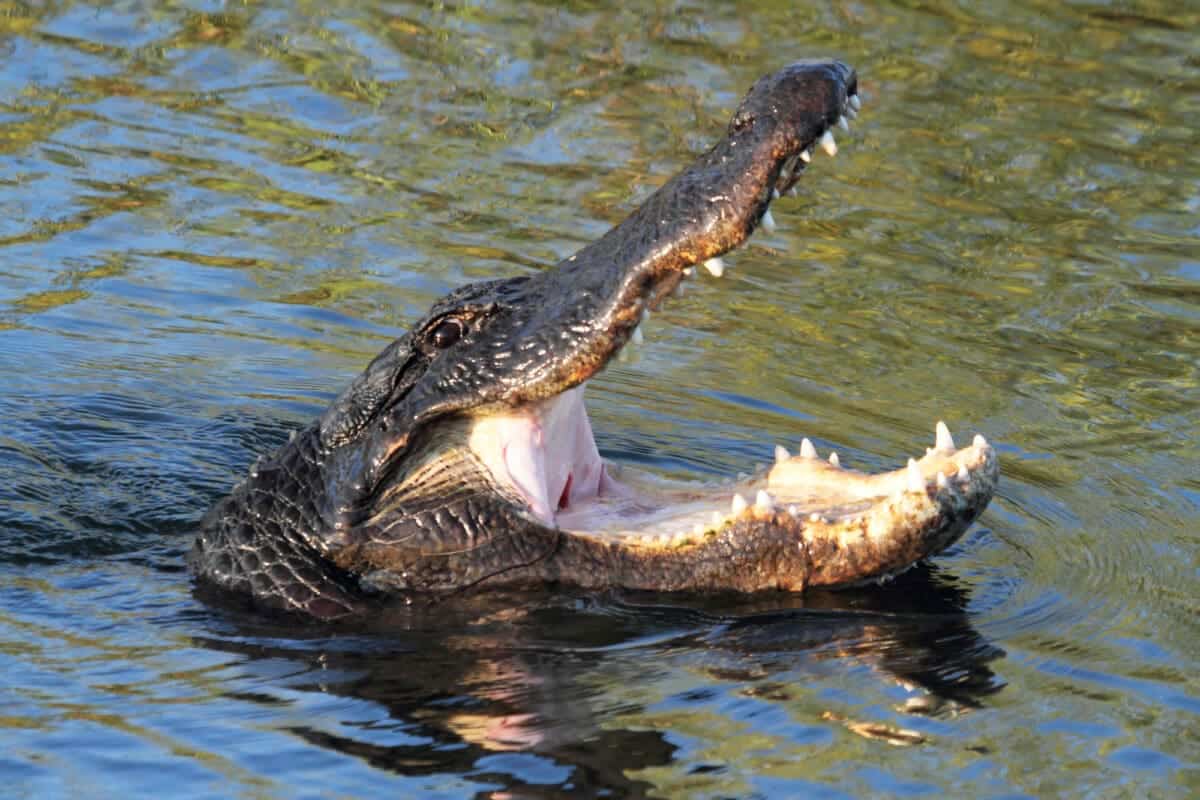The swampy terrenos of Louisiana conceal more than just enchanting tales of Southern folklore; they are home to some of the most astonishing creatures on Earth. One such creature, a legendary 19-foot alligator, continues to capture the imagination of both locals and tourists alike. This gargantuan reptile, reputed to be a record-holder, evokes wonder and a sense of grandeur about the natural world. This article delves into the story of this colossal alligator, exploring its life, the environment it inhabits, and the broader significance of its existence.
The Legend of the 19-Foot Alligator

In the heart of Louisiana, tales of the legendary 19-foot alligator abound. Although sightings of this mythical creature are rare, its legacy has been perpetuated through local stories and occasional claims of encounters. This massive alligator is believed to be the largest ever recorded, captivating the attention of wildlife enthusiasts around the globe. The legend, while steeped in a rich oral tradition, invites intrigue and encourages conservation of one of nature’s most ancient species.
Historical Context of the American Alligator

The American alligator, or Alligator mississippiensis, has a long and storied history in the swamps and marshes of the southeastern United States. These creatures have roamed the Earth for millions of years, maintaining much of their prehistoric form. The species was once on the brink of extinction in the mid-20th century, but conservation efforts have allowed their numbers to rebound. As a result, tales of particularly large specimens like the 19-foot alligator continue to circulate.
Physical Characteristics of Alligators

Alligators are robust reptiles characterized by their muscular tails and armored bodies, which help them blend seamlessly into their swampy environments. Typically, male American alligators can grow up to 13 feet long, with females generally smaller. However, a 19-foot alligator would surpass these averages by a notable margin. The creature’s physical dimensions contribute to its legendary status, cementing its place in folklore and scientific study alike.
Varied Habitats of the Alligator

The elusive alligator thrives in aquatic environments such as marshes, rivers, and lakes. Louisiana, with its extensive swamp networks, offers ideal habitats for these reptiles. The state’s rich biodiversity provides not just sustenance but also ample space for alligators to grow to impressive sizes, as evidenced by this exceptional 19-foot specimen. The importance of habitat preservation cannot be overstated, as it directly impacts the survival and potential size of these creatures.
The Diet of a Giant

Alligators are carnivorous, dining on a varied diet that includes fish, birds, and small mammals. A giant alligator, such as the legendary 19-footer, would require substantial nutrition to maintain its size. This necessity might influence its hunting patterns, pushing it to explore a broader range of available prey. The feeding habits of such a large alligator provide fascinating insights into the adaptability and role of apex predators in an ecosystem.
The Mating Behavior of Alligators

Alligators engage in complex mating behaviors, characterized by vocalizations, head-slapping displays on the water, and even choruses. Given the rarity of such a large alligator, its mating rituals and territorial disputes could potentially differ from its smaller counterparts. Understanding these behaviors contributes to the broader knowledge of the species and ensures continued efforts to study and protect these remarkable reptiles.
Conservation Efforts and Their Impact

While the alligator population was once in danger, the implementation of legal protections and habitat preservation efforts have helped secure their future. In Louisiana, these measures importantly protect not only individual alligators but entire ecosystems. Ensuring the survival of giant alligators like the 19-foot legend relies on sustained conservation commitments to safeguarding their natural habitats from human encroachment and environmental changes.
Alligator Attacks: A Look at the Risks

Despite their fearsome reputation, alligator attacks on humans are relatively rare. These reptiles tend to avoid humans and other large animals, preferring the safety of their aquatic domains. However, with a 19-foot size, the potential risk from a defensive or startled alligator could be significant. Awareness and respect for these wild creatures are pivotal to preventing encounters that could endanger both humans and alligators.
The Significance of the 19-Foot Narrative

The story of the 19-foot alligator serves a dual role: it is both a captivating legend and a reminder of the extraordinary potential hidden within natural ecosystems. The narrative encourages a deeper appreciation for wildlife and a commitment to environmental education. Such stories illuminate the splendor of nature’s wonders and the enduring allure of wildlife myths that persist even in modern society.
Ecological Roles of Alligators

Alligators play an important ecological role as apex predators, maintaining the balance within their habitats. By controlling prey populations, they support the health of their ecosystems. Moreover, alligators create “alligator holes” which, during droughts, provide essential water for other species. The existence of a 19-foot alligator highlights the adaptability and crucial ecological contributions of these formidable reptiles.
Public Fascination and Tourism Impact

The allure of a legendary 19-foot alligator has intersected with tourism in Louisiana, drawing visitors keen to explore the wilderness and share stories of this colossus. Wildlife tours, educational programs, and digital narratives about alligators foster a sense of connection between humans and the natural world. This fascination invariably benefits local economies and inspires continued conservation efforts.
Future Prospects for Giant Reptiles

The fascination with giant alligators, like the legendary 19-foot specimen, offers a glimpse into future opportunities for biological research and conservation awareness. As scientific techniques improve, our understanding of how these animals grow to such sizes will advance, providing critical insights into their biology and ecology. With ongoing efforts, the tales of legendary alligators may produce new realities and discoveries for generations to come.
In summary, the legend of Louisiana’s 19-foot alligator continues to inspire awe and environmental stewardship. It stands as a testament to the wonders of the natural world and emphasizes the need to appreciate and preserve these incredible ecosystems. As science unveils more about these magnificent creatures, the myth of the colossal alligator remains a captivating reminder of nature’s grandeur and the mystery that still lurks within its depths.
- Why Bears Play—and What It Teaches Us - August 24, 2025
- 12 Dog Breeds That Can Survive a Coyote Attack - August 24, 2025
- The Most Powerful Earthquakes That Shook the U.S. - August 24, 2025

